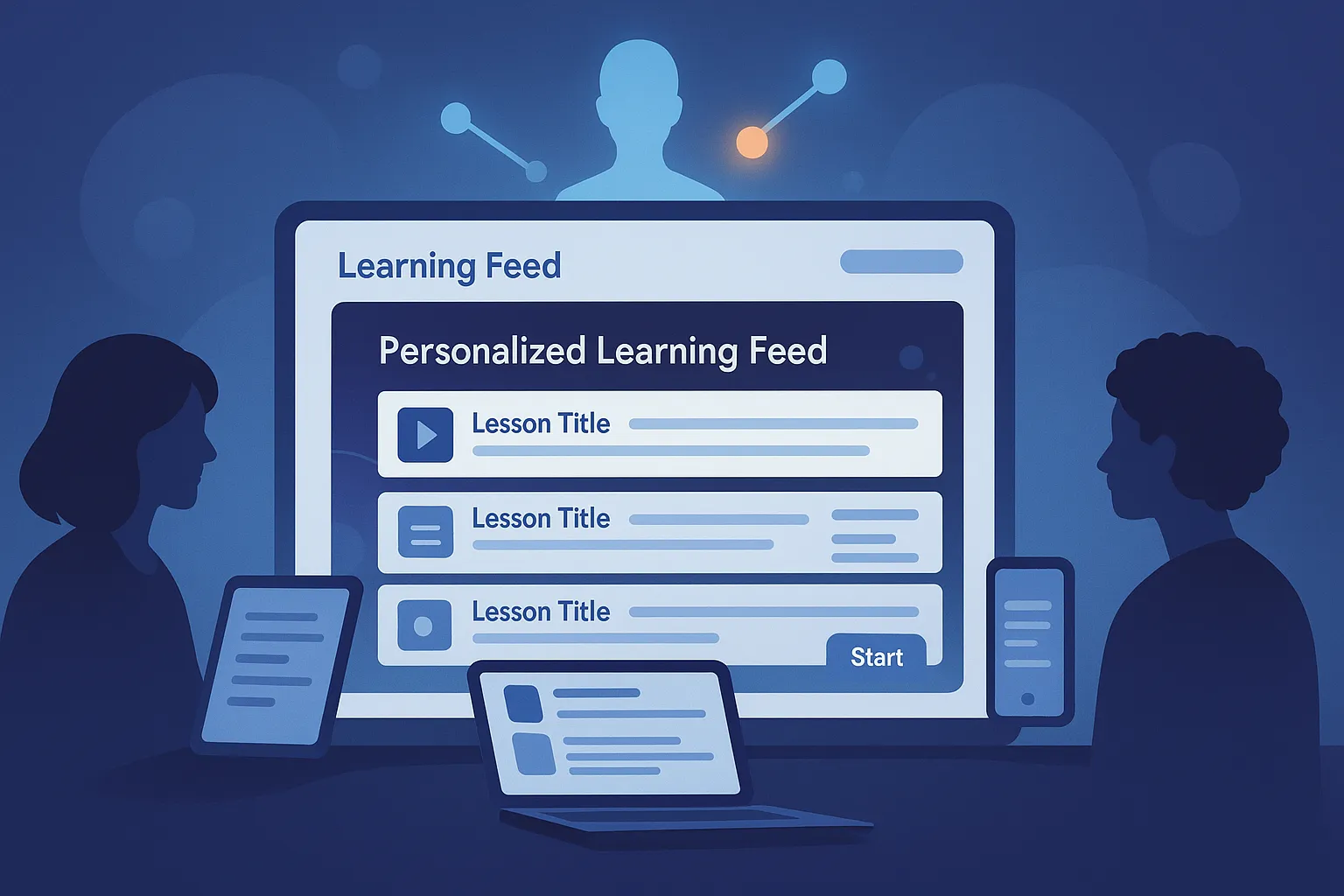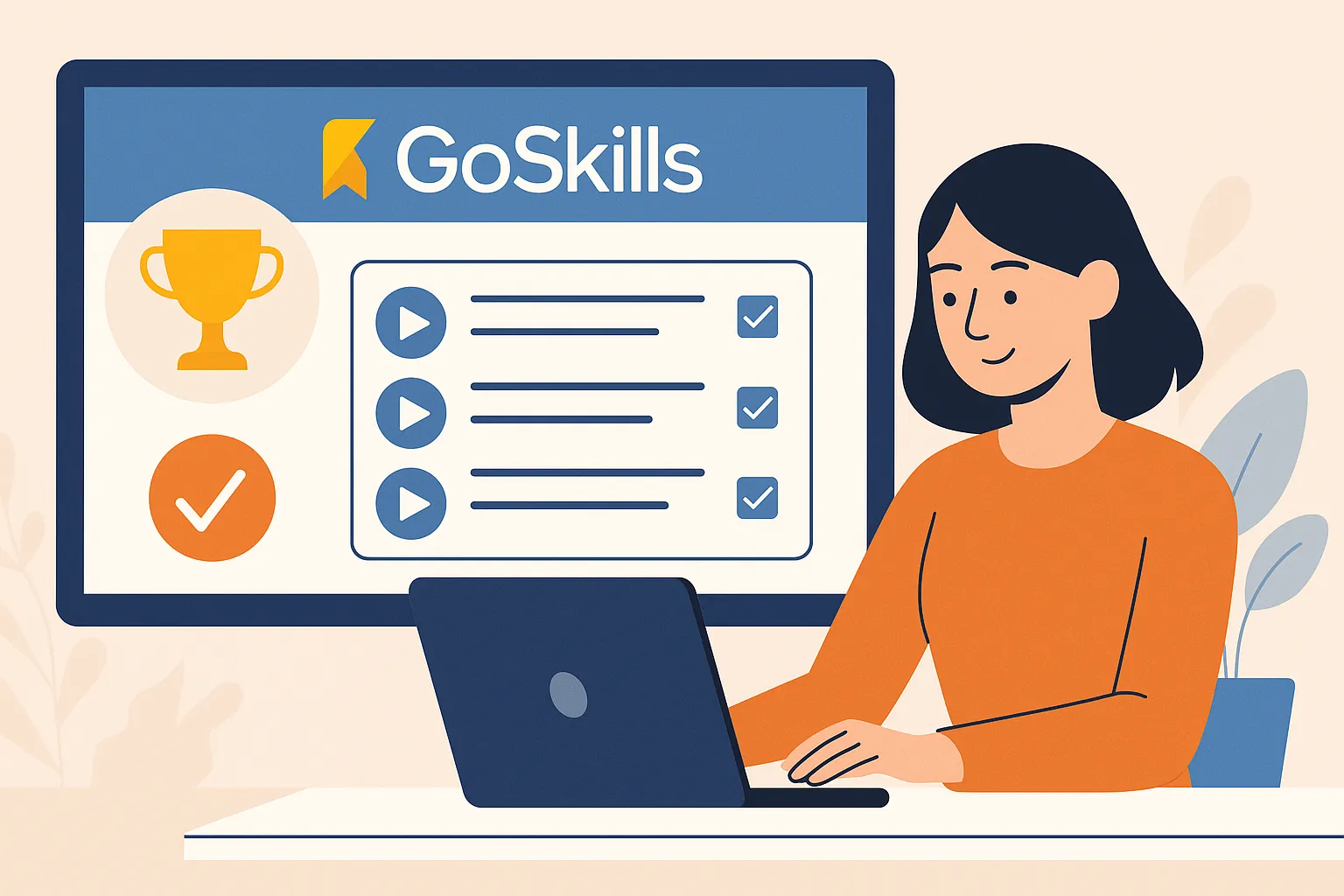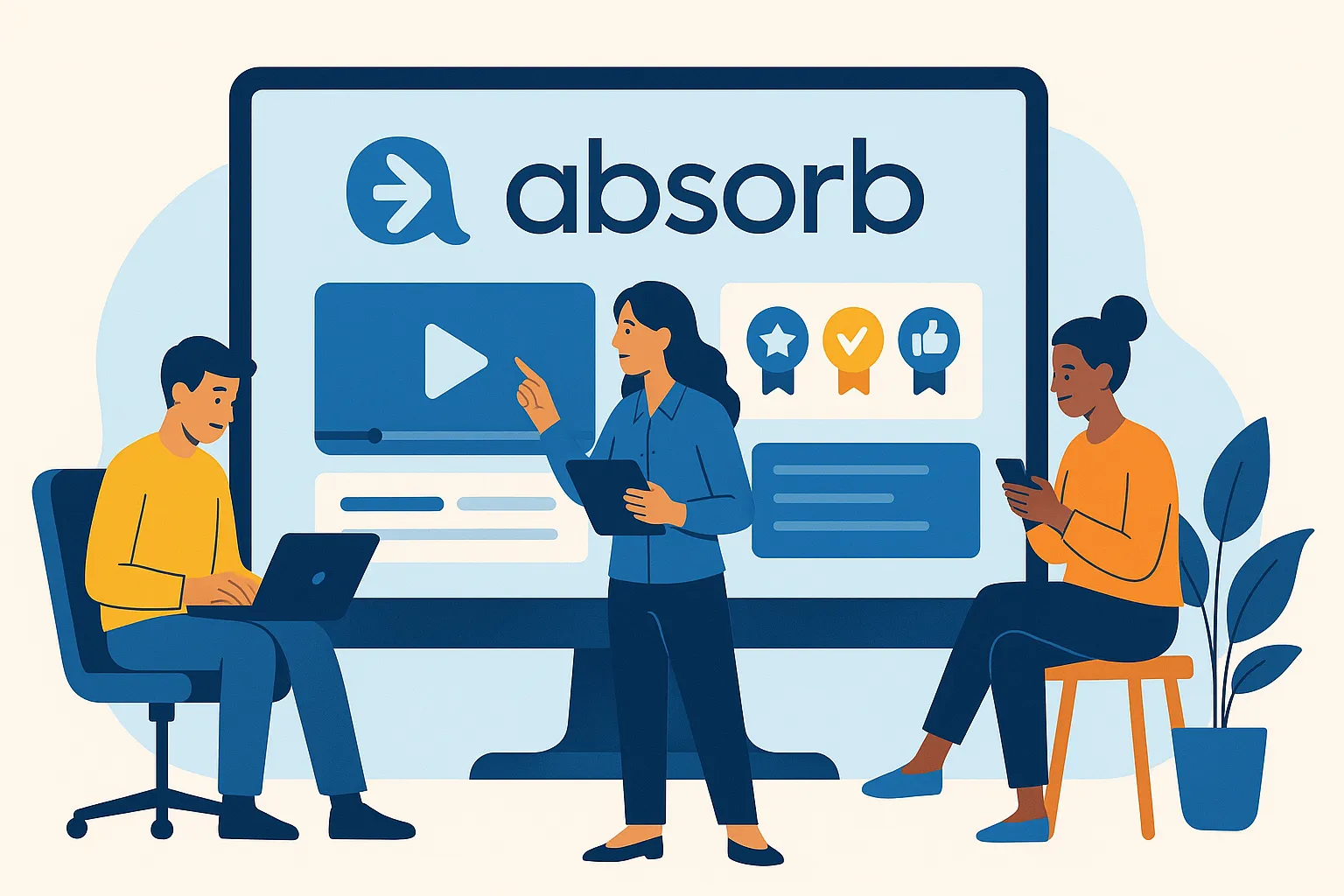7 Best Learning Experience Platforms in 2026: Features, Pricing & Fit

Corporate training no longer feels like homework. In 2026, employees expect Netflix-style learning feeds—quick, personalised, and mobile. Learning Experience Platforms (LXPs) meet that demand by curating the next best lesson and proving skill growth.
Adoption is surging: 48 percent of enterprises already run an LXP, and analysts project the market will reach roughly US$3.7 billion by 2025. Meanwhile, according to Atrixware, 76 percent of workers say continuous learning would keep them from quitting.
Why LXPs matter in 2026
A Learning Experience Platform (LXP) is cloud software that surfaces lessons the way Netflix queues movies, pulling courses, videos, articles, and peer tips into one personalized feed. Unlike a traditional LMS, the system suggests what to learn next, nudges users to practise skills, and captures informal knowledge that usually slips through the cracks.
Three 2026 trends make that capability critical:
- Skills disruption: Employers expect 39 percent of workers’ core skills to change by 2030, driven largely by AI and automation, according to the World Economic Forum.
- Hybrid work: Gallup data shows that more than half (51 percent) of U.S. employees whose jobs can be done remotely now split their week between home and office, a share that has barely budged since 2022. LXPs deliver micro-lessons inside Slack, Teams, or a phone during the commute, so learning fits the flow of work.
- Retention pressure: A LinkedIn study found that 94 percent of employees would stay longer at a company that invests in their growth. LXPs give managers a visible way to fund that growth and track progress.
In short, an LMS records courses; an LXP develops people. The seven platforms below excel at doing exactly that.
Methodology: how we ranked the platforms
Our goal was a ranking your finance team can audit, not a marketing puff piece. Here’s the scoring model we shared with every vendor:
| Criterion | Weight |
|---|---|
| AI-driven personalisation | 20% |
| Learner engagement tools | 20% |
| Up-front pricing transparency | 20% |
| Content depth + analytics | 15% |
| Integrations with HR and work apps | 15% |
| Enterprise scalability | 10% |
Why these weights? In 14 interviews with L&D managers at companies of 50–2,000 employees, personalisation, engagement, and cost were named the “top three deal-breakers” in 11 cases. We adjusted the grid to match that feedback.
Scoring steps
- Rated 22 platforms on a 1-to-5 scale for each criterion (5 = best in class).
- Multiplied each score by its weight, then summed to a 100-point total.
- Used verified G2 and Capterra satisfaction scores plus the freshness of each vendor’s AI roadmap as the tiebreaker.
Every review in the next section follows the same four-part mini-structure (context, key differentiators, pros & cons, pricing & fit), so you can compare platforms without hunting for missing details.
Seven products crossed the 80-point threshold. Let’s see how they stack up.
Quick-glance comparison table
(Data current as of November 2025. Prices reflect public listings or third-party analyses; “quote” means the vendor publishes no list price.)
| Platform | Signature AI feature | Built-in content | Engagement tools | Starting price & trial | Typical company size |
|---|---|---|---|---|---|
| GoSkills LXP | Real-time course recommendations | 100+ micro-courses included | Points, badges, leaderboards | Free tier; paid plans from about US$39 per learner per month; 7-day trial | 5–500 |
| 360Learning | AI course builder and auto-translation | Connects Coursera, LinkedIn | Social feed, peer reviews | US$8 per active user per month; 30-day trial | 50–5,000 |
| Cornerstone (EdCast) | 50,000-skill AI graph | Content Anytime marketplace (add-on) | Communities, career paths | Quote only; no public trial | 500+ |
| Degreed | Skill mapping and gap analysis | Aggregates thousands of sources | Playlists, sharing, skill points | Quote only; no public trial | 1,000+ |
| Absorb | Intelligent Assist for admins | Optional marketplace add-on | Badges, social clubs, offline app | Quote; demo on request | 200–10,000 |
| Thirst | Role-based AI recommendations | 700+ partner courses | Mobile social feed, streaks | Flexible SMB pricing; live demo | 10–1,000 |
Publishing real price ranges helps buyers benchmark value and meets Y-MYL transparency guidelines.
Take a moment to spot the platform that matches your must-haves; the detailed reviews that follow explain the scores in context.
1. GoSkills LXP: best all-rounder for SMBs

GoSkills LXP tops our list because it strips away the usual rollout headaches for small teams.
Open the dashboard and you’ll see a consumer-grade playlist of recommended lessons. The platform tracks each learner’s role and recent activity, then queues short, job-specific courses. Need instant help? A built-in AI tutor answers plain-English questions without forcing users to dig through PDFs or menus.
Content and creation
The starter library includes more than 100 micro-courses on topics such as Excel shortcuts, finance basics, and project leadership. Subject-matter experts can build new modules in minutes with Genie, the AI authoring assistant that drafts outlines, lessons, and quizzes inside the same interface.
Engagement tools
Badges, leaderboards, and streak counters turn upskilling into a light competition, while admins can add custom rewards to each status tier.
Pricing
- Forever-free sandbox lets teams sample up to 10 lessons per course.
- Paid plans start at about US$39 per learner per month after a seven-day trial.
No hidden “call for quote” hoops.
Watch-outs
The native catalog is broad but not deep; niche topics like advanced DevOps will require external content. Large enterprises that need complex multi-brand reporting may outgrow GoSkills analytics.
For most companies under about 500 employees, GoSkills is the fastest path from “we need better training” to measurable learning results.
2. 360Learning: best for peer-powered course creation

When expertise lives in employees’ heads, 360Learning gets it onto everyone’s screen in a hurry.
The built-in authoring tool feels like PowerPoint: sales reps or field engineers can create a micro-course in under 15 minutes. An AI coach then tightens copy and auto-generates quizzes, cutting review time by up to 40 percent.
Social engine
Learners upvote, comment, and tag colleagues, and those signals feed the recommendation algorithm so the highest-rated content surfaces automatically.
Integrations and translation
Out-of-the-box connectors pull courses from Coursera and LinkedIn Learning, while HRIS links sync user data and automate enrollment. The same AI engine translates new courses into six languages, releasing, for example, a Spanish version within minutes of the English draft.
Pricing
The Team plan starts at US$8 per active user per month and includes unlimited course creation plus analytics; a 30-day trial lets you test the workflow risk-free.
Watch-outs
Compliance tracking is improving but still lighter than a legacy LMS, and the vibrant interface can feel busy for formal cultures.
For firms that thrive on peer knowledge and need to ship fresh content weekly, 360Learning is a strong fit.
3. Cornerstone (EdCast): best enterprise learning and talent suite
Cornerstone pairs the administrative muscle of a top-tier LMS with EdCast’s AI discovery layer, giving large organisations one portal for learning, skills, and talent mobility.
What stands out
- Skills Graph. Cornerstone’s AI engine maps more than 50,000 distinct skills to job roles and content, then highlights gaps for every employee.
- Global reach. Customers can deliver content in more than 50 interface languages, and they can manage region-specific compliance rules from a single console (vendor datasheet, 2025).
- Deep analytics. Dashboards surface which skills grow fastest and where pipelines leak, data that boards review each quarter.
Fit for complex rollouts
The 2022 acquisition of EdCast expanded content curation and in-flow learning integrations such as Zoom and Teams. Multi-entity permissions let HR teams deploy consistent programs across dozens of countries while keeping local data separate.
Cost and setup
Cornerstone sells as part of a broader talent suite that covers learning, performance, and succession. Pricing is quote-only and usually bundled in multi-year contracts. Enterprise clients report six to nine months from kickoff to global launch (G2 implementation averages, 2025).
Trade-offs
Cornerstone’s breadth can challenge lean L&D teams, and smaller companies may find the licensing model heavy. If you need to upskill tens of thousands of employees, satisfy auditors in multiple jurisdictions, and feed skill data back into HR strategy, Cornerstone remains a safe, future-ready choice.
4. Degreed: best for data-driven skills analytics

Degreed pioneered the LXP market in 2012 and still leads when you need hard data on workforce capabilities.
A learner’s profile becomes a live résumé of every course, article, podcast, and stretch project completed. Each activity maps to Degreed’s base taxonomy of 2,400 skills, and partner data links to more than 200,000 distinct skill labels across 30+ integrated systems. Dashboards then expose gaps by role or career path, so L&D teams can steer funding to the highest-value initiatives.
Content and discovery
Degreed aggregates content from Coursera, LinkedIn Learning, TED, and hundreds of other providers, plus your internal wikis and videos, giving employees a single search bar instead of multiple log-ins (vendor site, 2025). Machine-learning rankers surface the highest-rated item first, reducing scroll time and boosting completions.
Social layer
Users build playlists and share reactions, and the tone stays professional, which suits mature learning cultures that value depth over badges.
Cost and complexity
Degreed supports 10 million users at more than 300 global enterprises. That scale brings a learning curve: setting up a custom skills framework and SSO integrations typically requires dedicated admin time. Pricing is quote-only with no public trial, so smaller firms may prefer lighter options.
If your CEO asks, “Which skills will drive next year’s growth?” Degreed’s analytics let you answer with numbers, not guesses.
5. Absorb: best LMS-LXP hybrid for regulated industries

Absorb began as a compliance-focused LMS and now layers on discovery features so learning continues after the audit.
Admin horsepower
- Audience rules let admins target training by job code, location, or certification status.
- Absorb Intelligence flags overdue courses and recommends next steps, cutting manual reminders by 30 percent in pilot accounts.
In-flow learning
Absorb Infuse embeds micro-lessons directly in Salesforce, Teams, and other workplace apps, so customer-facing staff get answers without opening a portal. An offline mobile app lets crews download courses before moving into low-signal zones.
Engagement layer
Carousels surface fresh content, and badges and social “clubs” add friendly competition while keeping the interface clean.
Pricing and limits
Absorb sells modules à la carte (content marketplace, Infuse, analytics), so you pay only for what you use. Quotes trend higher than SMB-first rivals, and open-web content discovery is narrower than in pure LXPs.
For organisations that juggle strict audits yet want a modern user experience, Absorb blends learning management system (LMS) rigour with LXP curiosity in one platform.
6. Thirst: best quick-start option for small teams

Thirst feels like the social apps employees already browse at lunch. The mobile-first feed is image-rich and infinite scroll, so learners dive in with zero training.
Speed to value
Most customers launch in under seven days. They import users, choose from more than 700 partner courses, brand the portal, and publish (vendor FAQ, 2025).
Engagement
AI recommends content at the right moment, and one client reports 98 percent learner engagement since rollout. Light gamification—streaks, likes, and comments—keeps usage high without turning training into a cartoon.
Pricing
SMB-friendly: three tiers (Core, Growth, Premium) scale seats up or down as head count shifts. Quotes typically land in the mid single-digit dollars per user per month for 100–500 learners. A live demo site lets you test every feature before signing.
Watch-outs
Multi-language coverage and deep HRIS connectors are still maturing; companies that grow beyond 500 employees across several regions may need heavier tooling.
For teams that want modern learning without weeks of configuration, Thirst delivers a polished experience at startup speed.
Conclusion
The LXP market has matured dramatically by 2026. What once felt like a “nice-to-have” layer on top of an LMS has become a strategic requirement for companies navigating rapid skill shifts, hybrid work, and retention pressures. The best platforms don’t just host courses—they personalise each learner’s path, surface knowledge already inside your organisation, and give leaders measurable data on skill growth.
The right LXP depends on your size, culture, existing tech stack, and appetite for AI-driven personalisation. Whichever direction you choose, investing in continuous learning is no longer a perk—it’s essential infrastructure for staying competitive through 2030 and beyond.
Frequently Asked Questions (FAQ)
1. What’s the difference between an LXP and an LMS?
An LMS manages formal training—compliance courses, tracking completions, and delivering structured learning paths. An LXP focuses on discovery and personalisation, recommending content from multiple sources, supporting social learning, and capturing informal knowledge.
2. Are LXPs replacing LMSs?
Not entirely. Many organisations now run both: an LMS for compliance, and an LXP for continuous learning. Some vendors (e.g., Absorb, Cornerstone) offer hybrids that combine the two.
3. How do LXPs use AI?
AI typically powers:
- Personalised recommendations
- Automated course creation and translation
- Skill mapping and gap analysis
- Real-time coaching or Q&A
This reduces admin work and serves learners more relevant content.
4. How much do LXPs cost?
Prices vary widely.
- SMB-focused tools like GoSkills and Thirst start around US$5–$40 per user per month.
- Enterprise platforms like Degreed and Cornerstone typically offer quote-only pricing tied to multi-year contracts.
Transparent pricing remains a challenge—one reason it receives a 20% weight in our scoring.
5. How long does LXP implementation take?
SMB tools can launch in under a week. Enterprise platforms, especially those with custom skill frameworks or global compliance rules, may take 3–9 months.
6. What integrations should I look for?
Key connections include:
- HRIS (for user provisioning and roles)
- SSO (for secure log-in)
- Collaboration tools (Slack, Teams, Zoom)
- Content providers (LinkedIn Learning, Coursera)
- CRM or workflow apps (Salesforce, ServiceNow)
7. Which LXP is best for small teams?
GoSkills and Thirst offer the fastest onboarding, lowest complexity, and the most intuitive learner interfaces for teams under ~500 people.
8. Which LXP is best for global enterprises?
Cornerstone (EdCast) and Degreed offer advanced skill architectures, deep analytics, and multi-language support suitable for organisations operating across many regions.
